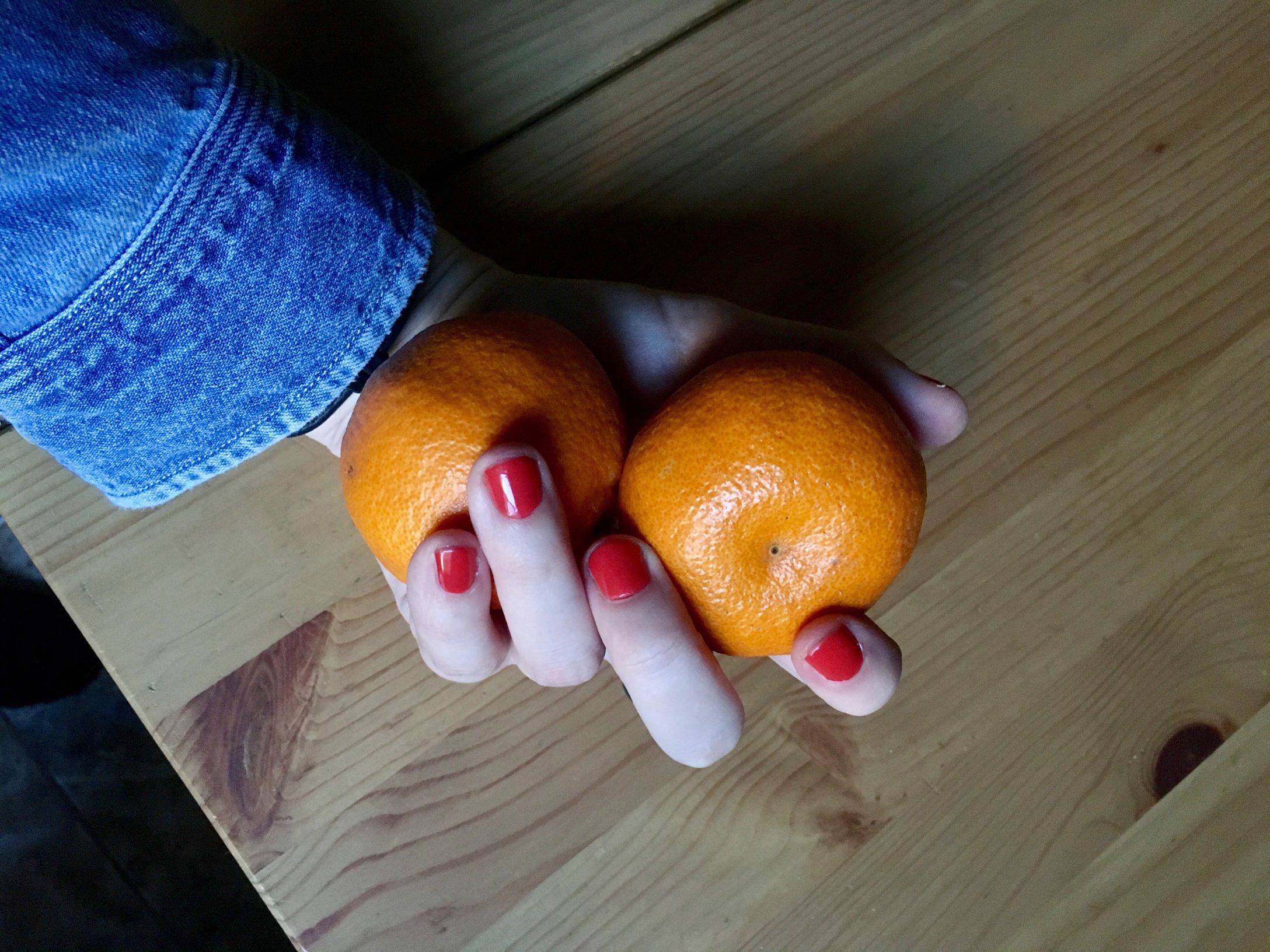April 4, 2019
New York, New York
I left my apartment in the morning with two oranges in my coat pockets. Spring was peeking from behind a curtain of rainy days. The lighting was diffuse and people seemed to glow. It was one of those days where strangers were unusually kind and seats were available on the subway.
I sat next to a woman on the 4 train on my way to Chelsea, where I go to school. She seemed to be the same age as my Grandmama back home in southern California. I watched two elderly strangers whisper and giggle as they shared a seat on the train. As I stepped off the car, I spotted a teenager helping a man with a cane and a cap take his seat. Above ground, a man was wailing while he lay in the street and I watched an older nanny with a stroller stoop to talk to him outside the coffee shop.
I ate the first orange on the subway platform, waiting for the 6 train. I ate the second while I walked to school. The tips of my nails turned an acid yellow; because I couldn’t wash my hands, I held my fingers to my face and inhaled.
In California, citrus season runs loosely from November to March. I used to drive through the orange groves in Visalia and Fresno in the Central Valley on my way to and from the tiny mountain town I lived in which was tucked into the foothills of the National Sequoia Forest. During citrus season, I’d roll down the windows of my volvo and revel in the citrus-scented wind while picturesque and round-topped orange trees passed in symmetric lines. I’d stop in small towns and buy satsumas with cash from fruit stands with hand painted signs. Orange peels piled on the passenger seat. Later when I lived in Los Angeles, I bought my oranges in thick plastic bags from the fruta street vendor with his rainbow-colored striped umbrella on the sidewalk, along with mango sprinkled with tamarindo.
In Manhattan the morning prior, I had bought 5 clementines for $2 from another street vendor in Chelsea. In class at my graduate program, I handed my table mate an orange and watched the way he peeled it. He pulled the rind from each section before he ate the slices so that the orange was patterned according to his portion, as opposed to my rough-and-tumble method of plunging my thumbs into the stem and shredding the rind into a star shape. Throughout class, we piled our orange rinds into a giant globe. On my application I had written that I hoped to create “readable prose, writing that’s as simple and satisfying as peeling an orange.” The process of writing for me at this pace and in this city, was messier than I’d imagined. I ate my oranges on the go: unwrapping a navel orange on the piss-stained subway platform, rushing downtown with sticky hands, stacking mandarin rinds in class just to do something collaborative as we listened to lectures.
After a meeting near Central Park, I joined the throngs of people shuffling through midtown with pleasant springtime lighting that shoves itself past high rise towers and old brick buildings to make slanted patterns on the asphalt. It was a nice day and I wanted to walk the thirty blocks back to school but the sole of my left boot was coming loose.
As I turned onto a main street, dragging my left foot through the crowd of people walking downtown, I looked at the sidewalk and saw a single tangerine puttering down the street. The woman next to me seemed to be corralling it with gentle nudges from her sneakers. She was wearing a bonnet and a purple blouse. She seemed to be the same age as my Grandmama. Assuming she had dropped it, I picked it up and asked if she wanted her orange back and she said it wasn’t hers and that I should take it. I brushed it off and we considered it together: it was understood that the orange was auspicious. I tried to give it back to her one last time but she pushed it away and said, “Take your luck.” So I did and we parted ways. I ran down the block with my broken shoe and my lucky orange.






